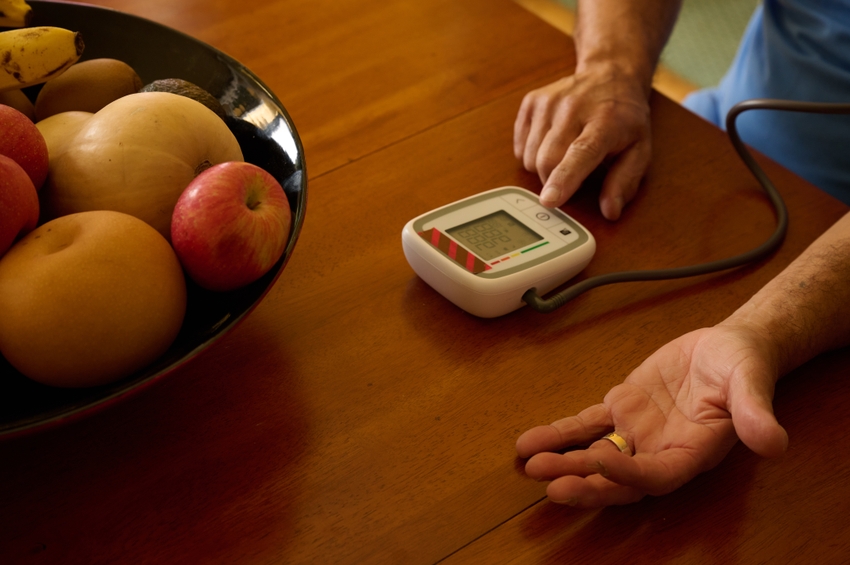New Study Shows Doing This for 3 Minutes a Day Can Lower Your Risk of Heart Disease – Good Housekeeping

Report on Incidental Physical Activity and its Contribution to Sustainable Development Goals
A recent study highlights the significant impact of incidental physical activity (IPA) on cardiovascular health, offering a practical approach to addressing key targets within the United Nations Sustainable Development Goals (SDGs), particularly SDG 3 (Good Health and Well-being).
Study Overview and Methodology
Research conducted by the University of Sydney’s Charles Perkins Centre investigated the long-term cardiovascular benefits derived exclusively from incidental physical activity among individuals who do not engage in structured exercise. This research is pivotal for public health strategies aimed at achieving SDG 3, which seeks to ensure healthy lives and promote well-being for all at all ages.
Participant Profile and Data Collection
- The study analyzed data from over 24,000 adults aged 40 to 79 who identified as non-exercisers.
- Participants wore wrist accelerometers for seven days to capture detailed summaries of light, moderate, and vigorous incidental physical activity.
- A follow-up was conducted eight years later to assess cardiovascular outcomes.
Alignment with SDG 3: Good Health and Well-being
By focusing on the prevention of non-communicable diseases (NCDs) such as heart disease, this study directly addresses SDG Target 3.4, which aims to reduce by one-third premature mortality from NCDs. The findings provide an accessible health intervention for a large segment of the population that does not meet standard exercise recommendations.
Key Findings on Cardiovascular Health
The study revealed a strong correlation between short bursts of daily activity and a reduced risk of major adverse cardiovascular events (MACE), including heart attack and stroke.
Impact of Incidental Physical Activity (IPA)
- Short bursts of moderate to vigorous IPA, lasting as little as three minutes per day, were found to potentially reduce the risk of MACE by half.
- A median daily dose of 4.6 minutes of vigorous IPA was associated with a 25% to 38% lower risk of cardiovascular events.
- A median daily dose of 23.9 minutes of moderate IPA was associated with a 40% to 50% lower risk.
- The study determined that one minute of vigorous IPA provides a cardiovascular benefit equivalent to approximately 3 minutes of moderate IPA.
Defining Incidental Physical Activity
IPA is defined as physical movement integrated into daily life, rather than structured recreational exercise. Examples include:
- Taking the stairs instead of an elevator.
- Carrying groceries.
- Bursts of fast walking.
- Vigorous domestic tasks such as vacuuming, mopping, or scrubbing.
- Intensive gardening activities like digging or hoeing.
Implications for Public Health and Sustainable Development
The study’s conclusions have broad implications, demonstrating that simple lifestyle modifications can contribute significantly to achieving global health and sustainability targets.
Promoting SDG 3: Good Health and Well-being
The findings empower individuals to improve their health through manageable, everyday actions. Promoting IPA is a cost-effective public health strategy that can help reduce the burden of cardiovascular disease, a leading cause of death globally. The “singing/speaking rule” is a practical tool for gauging intensity: light activity allows for singing, moderate activity allows for speaking but not singing, and vigorous activity prevents both.
Supporting SDG 11: Sustainable Cities and Communities
The encouragement of IPA aligns with SDG Target 11.2 (provide access to safe, affordable, accessible and sustainable transport systems) and Target 11.7 (provide universal access to safe, inclusive and accessible, green and public spaces). Urban design that prioritizes pedestrian-friendly infrastructure, such as prominent and accessible staircases and walkable neighborhoods, encourages the very activities shown to improve health outcomes.
Contributing to SDG 13: Climate Action
Choosing active movement, such as taking the stairs over an elevator or walking short distances instead of driving, reduces energy consumption and lowers individual carbon footprints, thereby contributing to climate action initiatives.
Recommendations and Conclusion
Policy and Individual Recommendations
- Individuals should be encouraged to integrate short, higher-intensity movements into their daily routines.
- Public health initiatives should promote the benefits of IPA as a complementary strategy to formal exercise guidelines, making health improvement more accessible to all.
- Urban and building design should actively promote incidental physical activity through infrastructure that prioritizes active choices.
Final Conclusion
While this study demonstrates the profound health benefits of incidental physical activity, it does not diminish the importance of structured exercise. The recommendation to achieve at least 150 minutes of moderate-intensity aerobic activity per week remains the standard. However, the findings affirm that all movement is beneficial and that integrating more intense activity into daily chores and routines is a powerful, accessible tool for protecting cardiovascular health and advancing multiple Sustainable Development Goals.
Analysis of the Article in Relation to Sustainable Development Goals
Which SDGs are addressed or connected to the issues highlighted in the article?
-
SDG 3: Good Health and Well-being
- The article directly addresses this goal by focusing on heart disease, which it identifies as the “leading cause of death in the U.S.” It explores methods to lower the risk of cardiovascular disease, diabetes, hypertension, and obesity, all of which are central to ensuring healthy lives and promoting well-being for all ages. The core message is about preventing non-communicable diseases (NCDs) through lifestyle adjustments, specifically physical activity.
What specific targets under those SDGs can be identified based on the article’s content?
-
Target 3.4: By 2030, reduce by one-third premature mortality from non-communicable diseases through prevention and treatment and promote mental health and well-being.
- The article’s content is highly relevant to this target. It discusses how regular and even incidental physical activity can significantly “cut the risk of a having a major adverse cardiovascular event, such as a heart attack or stroke.” By highlighting preventative measures against heart disease, diabetes, and hypertension, the article provides actionable advice aimed at reducing premature deaths from these specific NCDs.
Are there any indicators mentioned or implied in the article that can be used to measure progress towards the identified targets?
-
Indicator 3.4.1: Mortality rate attributed to cardiovascular disease, cancer, diabetes or chronic respiratory disease.
- The article explicitly states that “Heart disease is the leading cause of death in the U.S.” This directly references the mortality rate from cardiovascular disease. The study’s findings, which show a “25% to 38% and 40% to 50% lower risk of cardiovascular events (including deaths)” associated with physical activity, are aimed at reducing this specific mortality rate.
-
Implied Indicator: Prevalence of sufficient physical activity among adults.
- While not an official UN indicator for Target 3.4, the article provides a crucial metric for measuring prevention efforts. It notes that “only 24.2% of adults in the U.S. get the recommended 150 minutes of weekly moderate-intensity aerobic activity.” Tracking this percentage is an implied way to measure progress towards the “prevention” aspect of Target 3.4, as increasing physical activity is a key strategy to reduce NCD mortality.
Table of SDGs, Targets, and Indicators
| SDGs | Targets | Indicators |
|---|---|---|
| SDG 3: Good Health and Well-being | 3.4: Reduce by one-third premature mortality from non-communicable diseases through prevention and treatment. |
|
Source: goodhousekeeping.com

What is Your Reaction?
 Like
0
Like
0
 Dislike
0
Dislike
0
 Love
0
Love
0
 Funny
0
Funny
0
 Angry
0
Angry
0
 Sad
0
Sad
0
 Wow
0
Wow
0













































































